Fast Track to Best Practice Sustainability Reporting


The business benefits of sustainability reporting do not go unnoticed: in addition to a useful risk management tool, reporting can also generate savings, inform better decision-making, and increase stakeholder trust. But many companies new to reporting are asking: where should we start?
Over 90 percent of the world’s largest companies are already reporting on their sustainability impacts, and smaller companies are following suit. For many, the reporting journey begins by choosing a disclosure framework. The majority decide to report with the GRI Standards, which provides a comprehensive, flexible and adaptable framework for companies of any size to report on their economic, environmental and social impacts.
However, for newcomers in the reporting world, the range of disclosures, concepts and management approaches might admittedly seem intimidating – and even discourage from starting the process.
“The principle-based approach, disclosures on stakeholder engagement, focus on materiality and a wide range of topics are some of the many features that make the GRI Standards globally the most widely used sustainability framework. GRI’s Kick-off service helps organizations understand these main concepts and translate them into an action plan for their reporting process,” explains Shivani Rajpal, Director, Services, GRI.
Trinseo, a global chemical materials solutions provider, is a new GRI reporter. They decided to start using the GRI Standards in 2018. As a first step, the company signed up for GRI’s Kick-off service, which was completed in July. The service helps organizations to kick-start their reporting process through customized workshops, one-on-one guidance and a final action plan. It is aimed to support first-time or relatively new reporters.
Starting with an evaluation of Trinseo’s current sustainability reporting, the process continued with an online workshop with members of the company’s sustainability council. GRI also participated in a kick-off meeting to give input for Trinseo’s plans for stakeholder engagement and materiality assessment for their next report.
Walter van het Hof, Global Industry Affairs & Sustainability Leader at Trinseo commented: “The close collaboration with GRI and the related services have been a tremendous help to speed up the reporting process in a focused way. It has enabled to bring sustainability to the next level for our company, and make huge progress on our sustainability journey in a relatively short time.”
Thanks to the service, Trinseo began using the GRI Standards in its latest sustainability report and is planning to provide a fully GRI Standards aligned report in 2019.
Is your company interested in taking part in the Kick-off Service? Contact GRI's Services team or find out more on the GRI website!
Women Started Over 1,800 Businesses Every Day Last Year


Over the past year, women started an average of 1,821 new businesses every day in the US, according to the 2018 State of Women-Owned Businesses Report, commissioned by American Express. Women-owned businesses now employ more than 9 million people and rake in $1.8 trillion in annual revenue.
“This new data demonstrates not only the remarkable impact women entrepreneurs have on our economy when it comes to creating jobs and generating revenue, but also the growing role of women-owned businesses in our communities,” Julie Tomich, SVP of American Express Global Commercial Services, said in a statement.
More women are starting businesses, but high-growth companies remain few and far between
“Over the past 11 years, we’ve seen women’s entrepreneurship and economic impact increase—especially among the growing number of women-owned companies that generate more than $1 million in revenue,” Tomich continued.
The number of women-owned businesses that generated revenues in excess of $1 million increased by 46 percent over the past 11 years, compared to a 12 percent increase among all US businesses. Still, these high-earning firms make up only 1.7 percent of all women-owned companies, according to the report, which analyzes data from the US Census Bureau’s Survey of Business Owners.
Likewise, though the number of women-owned businesses increased substantially in the past decade, employment and revenue numbers remained relatively stagnant. Women-owned businesses employed roughly 6 percent of the American workforce in 2007, a proportion that marginally increased to 8 percent this year. Similarly, where women-owned firms generated 4 percent of all business revenue in 2007, they now pull in 4.3 percent.
Data points like these indicate that although more women are starting their own companies, their businesses aren’t growing at the same rate as those led by men, and many are lean operations with few employees.
Women of color are pushing through, but barriers remain
Women of color are America’s fastest growing entrepreneurial population. The number of firms owned by minority women has grown by 163 percent since 2007, and—despite making up around a quarter of the female population—women of color now represent nearly half of America’s women entrepreneurs. Entrepreneurship rates grew most among black and Latina women, 4.5 million of whom now sit at the helm of their own companies.
Still, as with women-owned businesses overall, discrepancies remain regarding the types of businesses founded by women of color—and their growth potential. The Atlanta-based social enterprise DigitalUndivided (DID), which helps women of color build their businesses, looks to quantify how black women fare in the high-growth-potential startup space through a data analysis called ProjectDiane.
DID identified 8,000 women-led, high-growth-potential startups in its most recent analysis, but a mere 4 percent of those companies were led by black women. This mirrors the findings in the latest AMEX report, which reveals that companies led by minority women tend to make less money than women-owned businesses overall—representing a substantial loss for the US economy. If firms owned by black and brown women generated the same revenue as all women-owned businesses, they would add 4 million new jobs.
Though the broader business community tends to zero in on equitable funding as a means to create more high-growth companies led by diverse teams, DID founder Kathryn Finney says that’s only part of the story.
“People tend to focus on the funding problem and not on the pipeline problem,” Finney told TriplePundit. “How are we developing more companies that are positioned well to receive funding? How do we support [women founders of color] who have received funding to raise the amount they truly need to build and scale their companies?”
Nathalie Molina Niño, founder of the gender-lens equity investment firm BRAVA Investments, agrees—arguing that while firms headed by women of color have the potential to bolster the American economy, too many black and brown founders struggle to get their companies where they need to be.
“Women of color, especially black and brown women, are the most entrepreneurial women in this country, but they’re stuck in survival mode,” Molina Niño recently told Conscious Company. “If we unlock that population from survival mode—to the point that they can invest in themselves, educate their kids, and build their businesses—you won’t see one Oprah Winfrey or one Sara Blakely [the billionaire founder of Spanx]. You’ll see armies of black and brown women with the potential to take over the economy.”
Though far more work is needed, conversations around founder diversity continue to amplify—which is a shift in and of itself—and the volume of women- and women of color-owned businesses grows every day: a million new women-owned businesses have come online since AMEX published its last analysis last year.
Image credit: Henri Meilhac via Unsplash
Company Deploys Massive Plastic Catcher to Clean Up Pacific Garbage Patch
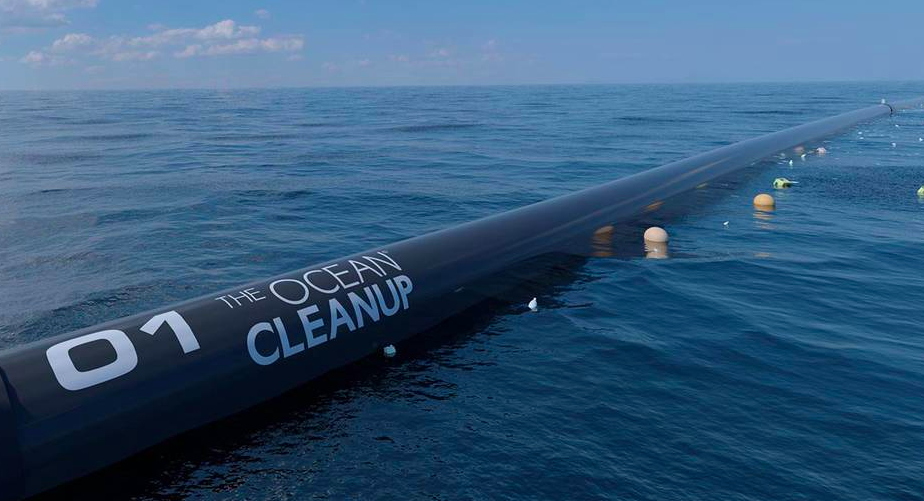

Ocean Cleanup, an environmental firm with its sights on shrinking the unparalleled size of the Great Pacific Garbage Patch, released a 2,000-foot-long plastic catcher system into northern California's San Francisco Bay last weekend. The multimillion dollar structure was tested for two weeks in the bay before being carted off to the Great Pacific Garbage Patch.
The garbage patch, gyrating between California and Hawaii, is twice the size of Texas and contains an estimated 1.8 trillion plastic pieces of plastic.
This massive contraption, named System 001, will act as an artificial coastline, corralling the plastic to one easy-to-sweep area by contouring itself into a ‘U’ shape from the ocean current and winds. A 10-foot long net will drape under the structure into the ocean and capture the debris. A large, garbage truck-like ship will then come and remove the garbage System 001 accumulates.
System 001 is not, however, foolproof. While millions of dollars have been poured into the designing and testing of the product, it’s difficult to simulate the conditions of the middle of the ocean. In a video posted on Facebook, Ocean Cleanup’s 24-year-old founder and Dutch entrepreneur Boyan Slat listed the three challenges ahead of the plastic catcher’s launch.
Three challenges or unknowns
- First, the behavior of the cleanup system: will the system react to the environment as Ocean Cleanup hopes? Will it form the desired ‘U’ shape when hit with the various wind patters and waves?
- The interaction between the plastic and the cleanup system: can the cleanup system not only collect the plastic, but efficiently retain the plastic? Slat admitted that this was his greatest fear prior to the launch, stating that it’s difficult to test this to scale in their labs.
- The survivability of the cleanup system: can the system endure the destructive environment of the ocean?
In the plastic catcher’s first year of operation, Ocean Cleanup hopes it will collect nearly 50 tons of garbage. And that’s just the beginning: Ocean Cleanup’s five-year plan aims to cut the size of the Great Pacific Garbage Patch by 50 percent by rolling out a fleet of 60 plastic catchers. Each structure is expected to cost upwards of $5.8 million.
Ocean Cleanup, started by then 19-year-old Slat, has raised $35 million through crowdfunding and investments from millionaires including Marc Benioff of Salesforce and Peter Thiel co-founder of Paypal.
The company fully realized the scope of its cleanup when they launched its “Mega Expedition” in 2015. The two-year research project commenced when 30 vessels went to the Great Pacific Garbage Patch to collect samples. After sifting and sorting through 1.2 million plastic pieces, Ocean Cleanup was able to estimate the scope of the Great Pacific Garbage Patch.
According to many sources, the Great Pacific Garbage Patch is estimated to be three times the size of France; is so ridden with garbage that it contains 250 pieces of plastic for every human in the world; and weighs 80,000 tons – 4-16 times more than previous estimates prior to the study.
While the venture is ambitious considering the alarming rates of plastic entering waterways, Ocean Cleanup hopes its business model will be self-sustaining. The company plans to recycle the plastics they fish out of the ocean into products they can sell. Any profits will then be diverted back into the organization to fund its new fleet.
While Ocean Cleanup is optimistic about its technology, some critics question whether investments in such technology are the right approach.
"Predictions that the Ocean Cleanup could remove 90% of surface plastics globally by 2040 using a full fleet of systems have been met with skepticism from environmentalists," wrote Hannah Summers, a reporter for the Guardian. "Critics of the project also fear the system could pose a threat to marine life."
Image credit: Ocean Cleanup
Why Transformative Volunteering Is Good Citizenship


by Lynn DeHoyos, senior manager, corporate citizenship, Deloitte Services LP
A coworker recently invited me to a group session at a non-profit organization that helps people impacted by poverty gain and keep employment. During these gatherings, attendees wear business attire -- dressing for the jobs they want. Participants, volunteers, and staff share their experiences and affirm one another. The ritual is part of the participants’ daily routine of showing up, ready to work, learn, and find a path to providing for themselves and their families.
Attending the session wasn’t just about seeing a group of people in professional dress intent on realizing their goals. The experience was not only transformative for participants, but also perspective changing for volunteers. At one point during the morning, an attendee stood up and showed us his apartment key. He said he got to kiss his wife goodbye before he left for work that morning – something he hadn’t been able to do in shelters, where families are typically separated by gender. I shared that story with no fewer than 15 people I work with. And I look forward to doing what I can to join my coworkers again as volunteers, helping men and women who are perhaps faced with challenges around them that has made the road tough, but who want the exact same thing that we all want and deserve – a life with purpose and lasting success.
Frequently, volunteer experiences are episodic events that provide vital support to organizations, while offering volunteers valuable exposure to nonprofits. But what if more of our resources and those volunteering moments could also be used to boost the impact we can have as volunteers, and forge sustainable relationships between employee volunteers, the companies they represent, and the community-based organizations they support?
That’s the thinking behind transformative volunteering, and why we continue to try to work meaningful connections between our volunteers and the impact they are having into our volunteer experiences. Chris Jarvis, who works with many corporate volunteering programs and studies the science behind them, believes transformative experiences provide greater capacity for empathy and opportunities to reflect on volunteer experiences, in ways that can ultimately change behaviors.
Research also shows that volunteering has a positive impact on job performance. And we know that many workers are demanding these types of opportunities from their employers: In Deloitte’s global 2018 Millennial Survey, 39 percent of respondents said employers should be trying to improve society, though only 25 percent of respondents said those ambitions actually reflect what’s happening at their companies. The survey also revealed that organizations and senior leaders who are most aligned with millennials in terms of purpose are likely to draw and retain the best talent.
Interest and participation in volunteering is high. According to a 2016 report by the Bureau of Labor Statistics, more than 62 million people volunteered through or for an organization at least once in the previous year. A greater percentage of employed people volunteered compared with their unemployed counterparts (27 percent versus 23 percent), and volunteers spent a median of 52 hours over the course of the year, according to the report.
Transformative moments like that morning at Motivations have changed me, and they can change anyone. I am fortunate to work in the corporate citizenship side of Deloitte, so inspiring our people to volunteer is part of my “day job.” I am also lucky that thousands of our professionals annually and throughout the year raise their hand to volunteer through Impact Day, our annual day of service, as well as other activities such as mentoring students who are navigating the college application process and looking for another adult role model to help them realize their aspirations.
It’s my job not only to help our volunteers have the right opportunities to connect, but to ensure they understand the need to experience the impact they can collectively have as well. Here are a few suggestions for companies that want to build transformative volunteering programs in their work with non-profits:
- Identify volunteers who are authentically and personally motivated to get involved. Employees who have relationships with community-based organizations may be more inclined to volunteer and lead and willing to ask their coworkers to join them.
- Think more intentionally about the ways you recruit, train, and engage volunteers. Include training for volunteer leaders who manage volunteering programs and collaboration with non-profit organizations to help articulate their missions to your volunteers as well.
- Finally, encourage volunteers to share stories about their experiences so they may inspire others to get involved.
Volunteering has been about applying skills, experience, and interest for social good. I look forward to continuing to have my own experiences as we work together to have a positive and sustainable impact on this world and each other.
This publication contains general information only and Deloitte is not, by means of this publication, rendering accounting, business, financial, investment, legal, tax, or other professional advice or services. This publication is not a substitute for such professional advice or services, nor should it be used as a basis for any decision or action that may affect your business. Before making any decision or taking any action that may affect your business, you should consult a qualified professional advisor.
Deloitte shall not be responsible for any loss sustained by any person who relies on this publication.
About Deloitte
Deloitte refers to one or more of Deloitte Touche Tohmatsu Limited, a UK private company limited by guarantee (“DTTL”), its network of member firms, and their related entities. DTTL and each of its member firms are legally separate and independent entities. DTTL (also referred to as “Deloitte Global”) does not provide services to clients. In the United States, Deloitte refers to one or more of the US member firms of DTTL, their related entities that operate using the “Deloitte” name in the United States and their respective affiliates. Certain services may not be available to attest clients under the rules and regulations of public accounting. Please see www.deloitte.com/about to learn more about our global network of member firms.
Copyright © 2018 Deloitte Development LLC. All rights reserved.
This article is part of a series sponsored by Deloitte and has gone through our usual editorial review.
Image credit: Adobe Stock
The Forgotten Climate Solution: Land


Climate change is bad for business, especially for those in agricultural sectors that rely on land to produce food, fiber and fuel. The more erratic the climate, the less stable their business.
Yet even though agriculture, forestry and other land uses contribute more greenhouse gas emissions than all the cars, trucks, planes and ships in the world, land-oriented climate change solutions receive only 3% of climate funding and represent 1% of the public conversation. We’ve got to close this gap.
That is why business leaders are gathering with public officials, scientists, producers and more for the Global Climate Action Summit in San Francisco this month. During the event, WWF and others will urge businesses to make land use a greater part of their efforts to reduce their carbon emissions, using science-based targets to set meaningful goals. Science-based targets ensure that businesses aren’t just doing better but are doing enough to keep the planet from warming more than 1.5oC over pre-industrial averages. Companies develop their own targets using a variety of methodologies and an independent group of experts assess them to ensure they’re viable and effective. Aside from the environmental benefits, science-based targets have also been shown to enhance brand reputation, boost innovation, increase savings, and bolster investor confidence.
To encourage better land use, WWF and a coalition of several dozen other NGOs have issued the 30X30 Forests, Food, and Land Challenge. Together, we’re urging businesses, states, city and local governments, and global citizens to improve forest and habitat conservation, food production and consumption, and land use, working together across all sectors of the economy to deliver up to 30% of the climate solutions needed by 2030.
Getting to 30% requires action at several levels. First, it means conserving forests, grasslands and other habitats. The conversion of these ecosystems to cropland and pasture releases carbon into the atmosphere and diminishes their ability to put that carbon back into the ground. Second, it means restoring degraded lands, which both makes more land available for production and builds that land’s capacity to store carbon. Third, it means using climate-smart agricultural practices to foster more resilient food systems that can put more carbon in the ground and better withstand the effects of climate change.
Most often, however, companies cannot take these actions themselves and, instead, rely on hundreds or thousands of different producers around the world to do so. “Land use” happens on the ground, after all. And this is what makes setting science-based targets especially challenging. When companies set science-based targets to cut emissions, their greenhouse gas sources are categorized in three areas: from their direct operations, their electricity use, and their supply chains. The third source—called “Scope 3 emissions”—require companies to influence the behavior of their suppliers, including smallholders in remote areas of Asia, Africa and Latin America rife with deforestation.
Out of 636 companies with commitments to eliminating deforestation from their commodity supply chains, 453 are manufacturers and retailers, several degrees removed from producers. These companies have immense buying power to start the conversation with supply chain stakeholders closer to production, but they also need to offer financial incentives and technical assistance to effect real change on the ground. Other players can advance progress, too. Input suppliers that sell fertilizer, chemicals and equipment, for example, can provide farmers with critical financial and technical support. Banks and investors can create new financial tools to incentivize and facilitate improved production practices. Tech companies can make it easier for companies, governments and other stakeholders to monitor progress against deforestation-free commitments with smart satellites, mapping technologies, networked supply chains. And governments are critical for setting policies and enforcing laws that level the playing field for responsible actors.
When the Global Climate Action Summit concludes, our efforts to curb climate change will continue—indeed, they must grow. In December, nearly every national government on earth will convene in Katowice, Poland, for the next COP to inject more momentum into the implementation of the Paris Agreement, but this is not their responsibility alone.
Businesses especially need to act, and collaborate with other stakeholders locally, nationally and internationally to serve as the engine of our ambition for a safer world. Otherwise longer droughts, more intense floods and production shortfalls will disrupt their operations and send shock waves that disrupt society at large. Science-based targets and land-based solutions can help us mitigate climate change and chart a livable future for our planet.
Image credit: Day's EdgeHow Sustainable Hydrogen Could Help Solve the Ocean Plastic Problem
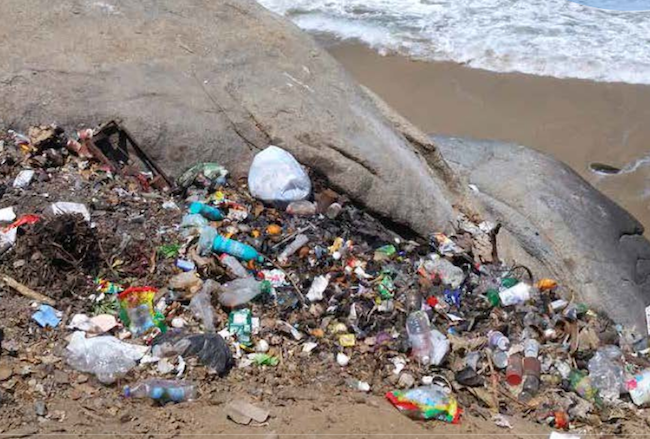

The quest for the sustainable hydrogen economy of the future is getting more complicated by the minute, as more evidence emerges about the role of natural gas in global warming. What's the connection? Well, hydrogen is an abundant, zero emission fuel. The problem is that hydrogen does not exist on its own. It must be extracted from something, and currently that something is, primarily, natural gas.
The good news is that the current state of affairs is beginning to give way to a new generation of sustainable hydrogen. With that in mind, let's take a look at Wales University of Swansea, which has come up with a sustainable solution that could help solve part of the ocean plastic problem, too.
The sustainable hydrogen twofer
Somewhat ironically, natural gas has been touted as a cleaner alternative to coal and petroleum. However, the climate change bloom is off that rose. The powerful greenhouse gas methane is the main constituent of natural gas, and it leaks all over the supply chain -- from drilling sites to pipelines, storage facilities and local distribution networks.
The climate change issue is over and above the local impacts of natural gas extraction, including air pollution and water resource impacts, and even earthquakes.
A good deal of the sustainable hydrogen research deals with electrolysis, in which an electrical current "splits" hydrogen from water (think H - two- O and you're on the right track). That's an energy intensive solution and it would have been uneconomical just a few years ago. With the advent of low cost wind and solar power, though, water splitting is becoming a practical solution to the natural gas problem.
Solar energy can also be used to power a photoelectrochemical reaction in water to produce hydrogen.
Most water splitting is based on using pure water, but an interesting environmental two-for-one is beginning to crop up. Researchers are beginning to develop systems that can produce sustainable hydrogen from polluted water and seawater.
In other words, hydrogen production could be used to offset the cost of water purification.
The Swansea solution
That brings us to the new Swansea research (let's tip our hats to our friends over at wardsauto.com, by the way).
Researchers in the school's chemistry department have developed a system that is similar to the photoelectrochemical pathway, except that it involves plastic instead of water.
The idea is to add a light-absorbing material to plastic, then soak it in an alkaline solution. Once exposed to sunlight, the plastic releases hydrogen.
As for a sustainable hydrogen twofer, according to the researchers any kind of plastic could be used, regardless of how dirty it is. In that case, hydrogen production could add value to plastic recycling, while also making the whole recycling chain more simple -- and less expensive -- to manage.
Interestingly, the researchers claim that small amounts of food waste seem to make the reaction more efficient.
As an additional bonus, the process only uses up about half of the plastic. The rest could be recycled to make other products.
Now, think one step ahead to the ocean plastic problem and you can see where this could go.
One major issue bedeviling ocean cleanup is cost. If any significant value could be recovered from ocean plastic, that would incentivize cleanup and prevention, too.
Don't hold your breath for plastic-to-hydrogen . . .
As may be expected, the Swansea research is years away from commercial application. The good news is that major hydrogen stakeholders are transitioning to sustainable hydrogen through other pathways.
India-based Business Industry Reports has just come out with a new analysis that forecasts surging growth in the global hydrogen market between 2018 and 2022. The top three companies in their list of major hydrogen producers are all engaged in sustainable hydrogen: Air Liquide, Air Products and Chemicals, and Hydrogenics.
Just to show how complicated the sustainability picture is becoming, though, a main source of demand for hydrogen has been in the petrochemical field, which still relies heavily on steam methane reforming from natural gas:
...The technology is employed in numerous applications such as chemical and pharmaceutical manufacturing, hydrogenation of oil, and petroleum refining, among others. Steam methane reforming is a mature technology and is widely adopted in these industries due to its higher efficiency when compared to other processes.
In particular, the report anticipates rising demand in several Middle East countries, due to demand for hydrogen related to low sulfur diesel produciton.
In other words, replacing natural gas with sustainable hydrogen could simply make it more economical to refine petroleum products.
Meanwhile, the firm ResearchAndMarkets.com is anticipating rapid growth in the hydrogen fuel cell electric vehicle market, so hold on to your hats.
Here in the US, the Department of Energy firmly behind renewable solutions for hydrogen vehicles, and private sector companies -- notably Ryder, Anheuser-Busch and the startup Nikola -- are already looking at renewable energy to provide hydrogen for long-haul fuel cell trucks.
Photo (screenshot): US Environmental Protection Agency.
How Technology Is Leading Us to New Climate Change Solutions
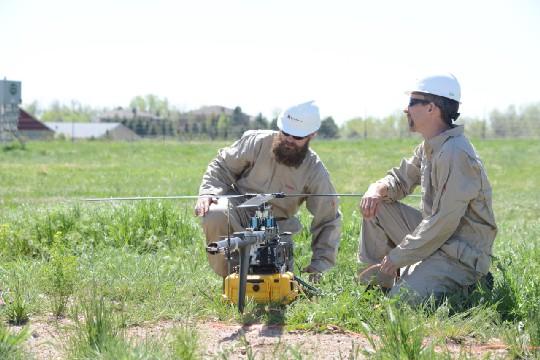

A fresh wave of technological innovation is deepening our understanding of tough environmental challenges — and also giving us new ways to solve them. As thousands of business leaders and policymakers gather in San Francisco this month for the Global Climate Action Summit, these game-changing innovations will be showing up all over town.
One example will be new approaches to measuring and reducing emissions of methane, a potent greenhouse gas that has pound for pound more than 80 times the near-term warming power of carbon dioxide. Human-made methane emissions are responsible for a quarter of all the warming we’re experiencing today.
That’s a problem, but it’s also an enormous opportunity. One of the largest sources of methane is the oil and gas industry. Indeed, natural gas is mostly methane. And it turns out that reducing these industrial methane emissions is the fastest, most cost effective way to slow the rate of warming, even as we continue working hard to decarbonize our energy system. But we didn’t know that until recently — or at least we couldn’t prove it — because nobody knew how much methane was coming from the oil and gas sector.
Data Reveals Problem, Opportunity
Five years ago, Environmental Defense Fund (EDF) set out to measure methane emissions from the U.S. oil and gas sector, launching an unprecedented scientific research effort involving more than 140 researchers from 40 institutions, along with four dozen oil and gas companies that provided site access and technical advice. Researchers used a range of technologies — including sensors mounted on drones, airplanes, and even Google Street View cars — to measure emissions at every link in the supply chain, from remote wellheads to pipes under your local street.
Results were published in over 30 peer-reviewed scientific journal articles. A synthesis paper published this summer in Science concluded that the U.S. oil and gas industry emits 13 million metric tons of methane each year—nearly 60 percent more than current Environmental Protection Agency estimates. But these emissions can be controlled, often through simple maintenance.
Data from the project has been instrumental in convincing both industry leaders and policymakers that they have a serious methane challenge. The findings helped shape new regulations in states such as Colorado, Wyoming, California, and Pennsylvania, and national-level policies to reduce emission from oil and gas production on federal and tribal land.
Now, we’re using the data to hold the line against misguided attempts by the current administration to roll back those standards.
Driving a Global Emissions Goal
Worldwide, the International Energy Agency (IEA) reckons that oil and gas methane emissions are about 75 million metric tons – enough to generate all of Africa’s electricity twice over. The IEA estimates that industry could reduce those emissions 75 percent using existing technologies (two thirds of that at no net cost).
We at EDF are calling for a 45 percent reduction in global oil and gas methane emissions by 2025. That would have the same 20-year climate benefit as closing one-third of the world's coal plants. Results on such a scale are conceivable thanks to growing digitization in the industry. For example, reliable, low-cost sensors, remote monitoring and oilfield internet-of-things can help energy companies reduce emissions (and eliminate waste of saleable gas at the same time).
To help realize these prospects, EDF is working with Shell and Equinor (formerly Statoil) to test continuous monitoring technologies developed by entrepreneurs who took part in our Mobile Monitoring Challenge. We’ve also partnered with Stanford University and ExxonMobil to look at mobile detection technologies using aircraft and drones.
Data-driven transparency is sparking competition within the industry itself. In April, BP set its first quantitative methane target. Last month ExxonMobil committed to cut emissions and flared gas volumes. Shell, Qatar Petroleum and other producers have also committed to reduce methane emissions across the natural gas supply chain.
Heading into Space
Now we’re pushing the technological envelope even farther, by developing MethaneSAT – a satellite mission due to launch in 2021, and designed to continuously map and measure methane emissions with exacting precision almost anywhere on the planet. MethaneSAT will make it possible to ‘see’ emissions in places where they’re difficult to track today.
Data from MethaneSAT will be available for free to anyone. It will help countries, companies and citizens spot problems, identify reduction opportunities, and measure progress over time. It’s just one of several space-based methane monitoring tools now in the works. The European Space Agency, for example, launched its TROPOMI satellite in 2017. A private company called GHGSAT has one satellite in orbit and another due to launch within the year.
[See EDF president Fred Krupp's TED Talk on MethaneSat]
Some have likened this to a new space race. But I see it as a wave of transformational change emerging from multiple nodes across an innovation ecosystem. Each has different, but complimentary, capabilities, together offering multiple streams of data to paint an unassailable picture of the problem.
Just as we have used the U.S. methane data to spur new policies and better business practices, we will use data from MethaneSAT and our allies to help reach our 45% reduction goal by 2025, and our aim to virtually eliminate the industry’s methane emissions by 2050.
Sensors, Sensors Everywhere
We’re deploying advanced sensor technologies to help create a healthier environment in other ways, too – from Google cars mapping air pollution and its health effects to wearable bracelets that track your daily chemical exposure.
Elsewhere, retailers and consumer brands are using blockchain to improve accountability and sustainability across far-flung supply chains. Sensors can help farmers reduce the amount of chemicals on their fields, and “smart boats” can help fishermen manage their catch effectively, increasing profits and fish in the sea.
It’s no coincidence the Global Climate Action Climate Summit is happening in California, the heart of America’s most innovative sector and the state that has led the nation in environmental stewardship. California has proven time and again that a strong economy and a healthy environment go hand in hand. Now more than ever, technology is the key to making this a worldwide success story.
Originally published by The Fourth Wave of Environmental Innovation on Medium. Also posted on 3BL Media news.
Image credits: EDFWhat the Booming Offshore Wind Market Means for Workers
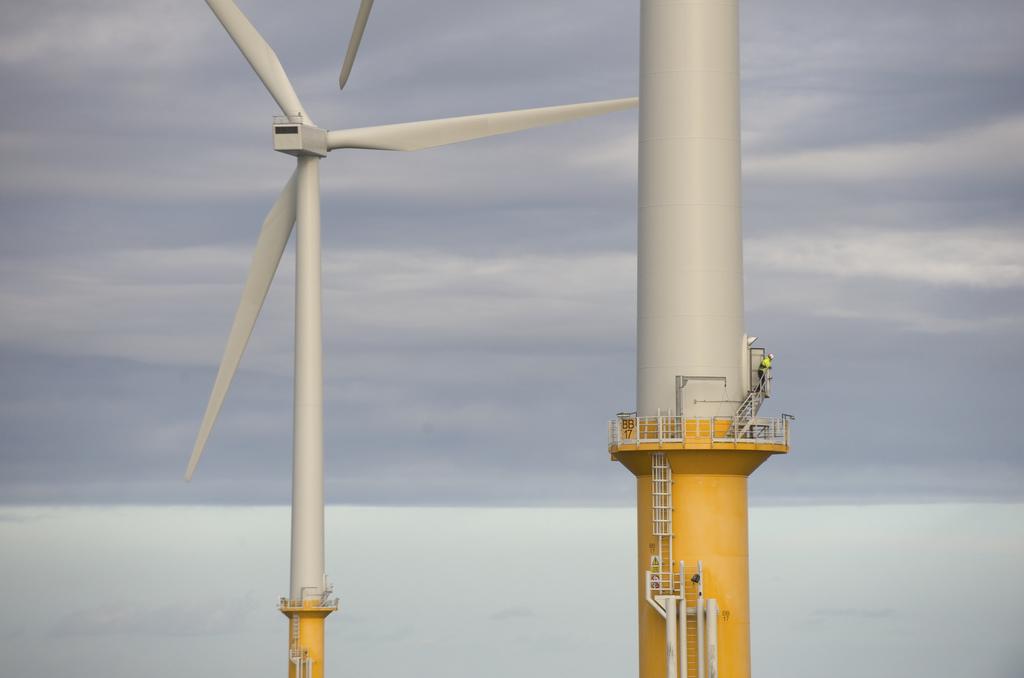

The global offshore wind market is expected to be worth more than $57 billion by 2022 and, as the Wall Street Journal reported recently, the race is on to build bigger, better turbines.
The average offshore turbine installed last year produced around 6 megawatts of power, and the offshore wind sector now generates 19 gigawatts of electricity globally—enough to power more than 13 million homes. The next symbolic and innovation benchmark for the industry is an offshore turbine capable of generating 10 megawatts of power—and top companies are gearing up to be the first across the finish line, the Journal reported.
Today’s most powerful offshore turbine —a prototype from MHI Vestas, a joint venture of Mitsubishi Heavy Industries and Danish company Vestas Wind Systems—has the potential to produce 9.5 megawatts of power and is roughly two times taller than the Statue of Liberty. German turbine company Senvion SA plans to produce a “10-plus” prototype by 2020, and General Electric teased the release of a 12-megawatt monolith earlier this year—though some are skeptical of the company’s ability to make it happen, reported Erin Ailworth of the Journal.
No matter which firm crosses the 10-megawatt threshold first, the innovation race continues to drive wind prices down significantly—which could unleash economic opportunities around the world.
The development of a typical 500-megawatt offshore wind farm requires around 2.1 million person-days of work—meaning work completed by humans rather than machines, according to the International Renewable Energy Agency (IRENA). The wind industry and related fields already employ more than 1.1 million people, in positions ranging from technicians and manufacturing workers to lawyers and consultants.
Americans make up around 10 percent of the global wind energy workforce, with over 100,000 people working in the industry at the end of last year, but data indicates we’re just scratching the surface. The U.S. has some of the best wind energy resources in the world, according to the Wind Energy Foundation. If we were to tap all of our accessible onshore and offshore wind potential, we’d produce 3.7 trillion kilowatt-hours of electricity each year—or nearly 10 times the country’s existing energy needs. Sourcing even 20 percent of our power from wind would create more than 500,000 new jobs, according to U.S. Department of Energy estimates.
Even further, the wind sector has the potential to address the pain points of hurting and displaced workers from other industries. A growing number of farmers are supplementing their income by leasing some of their land to wind power producers, and American wind farms paid $222 million annually to rural landowners as of 2016. The industry could also help prevent fossil fuel workers from being left behind in the shift to a clean-energy economy.
In Wyoming, which produces nearly half of America’s coal, Goldwind Americas is preparing to manufacture 850 turbines for a new onshore wind farm in the state. The U.S. subsidiary of Chinese wind turbine manufacturer Goldwind Global held a free two-week training last year to recruit candidates, particularly former coal miners, as technicians to service the turbines, the New York Times reported.
“If we can tap into that market and also help out folks that might be experiencing some challenges in the workforce today, I think that it can be a win-win situation,” David Halligan, chief executive of Goldwind Americas, told the Times.
Though the onshore wind market is far more developed and as such represents the bulk of wind-sector employment, fossil fuel workers may find it even easier to transition to the burgeoning offshore industry. “In offshore wind, many of the newly created jobs could be filled by labor previously employed in the fossil fuel sector,” IRENA explained in a report released earlier this year. “Offshore wind development benefits from synergies with offshore oil and gas, specifically in terms of skills and occupational patterns.”
Though the U.S. still has only one operational offshore wind farm—a five-turbine installation off the coast of Rhode Island—examples in Europe and elsewhere prove IRENA has a point. As of 2016, a third of all engineers working in the United Kingdom’s offshore wind sector had made the move from oil and gas. “By the end of the decade we expect the UK’s offshore wind sector to double in size,” Maf Smith, deputy chief executive for the UK’s largest nonprofit renewable energy trade association, RenewableUK, told the Telegraph. “So the UK is perfectly placed to take advantage of its 40 years of offshore expertise, with workers making the transition from fossil fuels into renewables.”
In Canada, Iron and Earth—an organization founded by oil sands workers—is out to retool their colleagues for the clean power sector. Last year, it partnered with offshore wind developer Beothuk Energy to retrain oil and gas workers for employment in six new offshore wind farms. “When the labor market recognizes a global shift, and becomes a first mover, it sends a strong signal to Canadians, to government, to industry. It’s a movement from blue-collar to green-collar,” Kirby Mercer, chairman and CEO of Beothuk, said in a statement.
Examples like these are encouraging, though challenges remain—even in the UK, the world’s leading offshore wind power producer, oil and gas workers are complaining that red tape makes it harder for them to transition to wind. Yet IRENA predicts the current segment is only the tip of the iceberg—projecting cumulative investments in offshore wind to reach $350 billion by 2030 and nearly $1.5 trillion by 2050.
“As the offshore wind energy sector grows, it offers greater opportunities for individuals and businesses from the offshore oil and gas sector in different segments of the offshore wind value chain,” the organization says.
Image credit: The Danish Wind Energy Association/Flickr
Editor's note: An earlier version of this article referenced Vestas Wind Systems as a Dutch company. We regret the error.
How Ingersoll Rand Factors ESG into Its Global Business Strategy


Businesses must think bigger and bolder to integrate environmental, social and governance (ESG) issues into their long-term corporate strategy. We have seen how time and again, this approach is vital to creating long-term stakeholder value and building a more sustainable world.
The global diversified industrial manufacturing company Ingersoll Rand has just published its 11th annual sustainability supplement, which reveals the progress the company is making on ESG issues to achieve what it says is necessary to address key global sustainability trends and transform lives.
Sustainability in All Forms
Since 2013, Ingersoll Rand has increased energy efficiency by 15.6 percent, cut down GHG emissions by 37.1 percent, reduced water consumption by 45.4 percent, increased its recycling rate by 5 percent, and reduced non-hazardous waste to landfill by 32.8 percent.On the social side, during 2017, the company increased its spending on diverse-owned businesses by 11 percent, donated $8.7 million towards philanthropic causes, and its employees volunteered 25,300 hours of their time. Ingersoll Rand’s female share of the total workforce is 22.8 percent and 19.8 percent of women are holding management positions.
Environmental Performance
Ingersoll Rand has diverted 11 million metric tons of CO2 equivalent (CO2e) emissions worldwide from its products when compared to a 2013 baseline.Through its acquisition of CALMAC Corp. in 2017, the company is strongly positioned to offer its customers wider choices for managing energy and operating costs. According to Ingersoll Rand, CALMAC will help take pressure off the energy grid, reduce strain on public utilities, bring down operating costs for building owners and enable more effective use of renewable energy.
Ingersoll Rand’s overall water use in 2017 increased by 2.5 percent compared to 2016, but the company reduced its 2017 water use by 8 percent at international locations in water-stressed regions.
Fifteen of its manufacturing sites achieved zero waste to landfill in 2017, and the company reduced its non-hazardous waste to landfill by 10 percent compared to 2016. Its recycling rate for 2017 increased by 3 percent compared to 2016.
Social Sustainability
In 2017, Ingersoll Rand’s chairman and CEO, Michael W. Lamach, joined more than 150 CEOs in a pledge to cultivate diversity and inclusion in the workplace through the CEO Action for Diversity & Inclusion.The company provides its salaried employees with anti-harassment training and makes clear policies available to its employees worldwide.
In 2017, in terms of workplace safety, Ingersoll Rand continued to reduce its incident rates and is approaching world-class injury prevention performance. In 2017, 93 percent of the employees believed that the company is committed to employee safety.
The company uses a Supplier Diversity Matrix, which enables it to avoid using price as the primary factor for supplier selection. Instead, the company continues to evaluate its supply chain using a wide range of factors, including supplier diversity, quality and risk.
Corporate Governance
Ingersoll Rand offers its employees a comprehensive healthcare benefits program, which includes a variety of medical treatment options. Furthermore, it has set 2020 targets for customer satisfaction that include goals to increase the health, safety, durability and reliability of its products.From the perspective of regulatory authority compliance, Ingersoll Rand complies with or exceeds requirements of international, national, state and local regulations and standards that aim to protect the environment, human health and safety.
In every case, whether or not an applicable law or regulation exists, the company says it applies robust EHS management practices, which continue to drive its compliance record.
“Our commitment to the Ingersoll Rand values—integrity, respect, teamwork, innovation and courage—continues to serve as the catalyst for our profitable growth,” said Lamach in a letter to shareholders. “What matters to our success is not just what we do, but how we do it.”
Salesforce Announces New Virtual Power Agreement
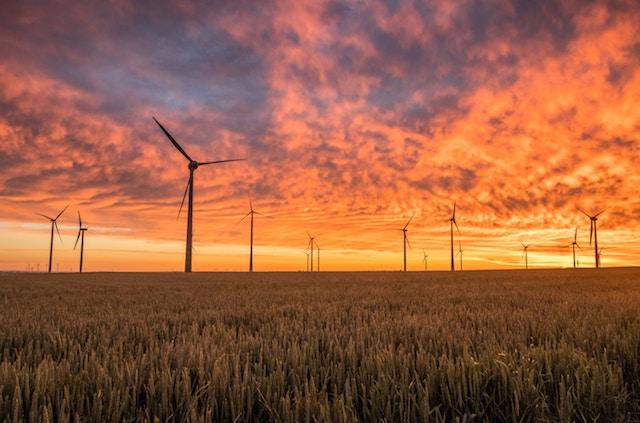

Keeping with its commitment of reaching 100 percent renewable energy by 2022, Salesforce has just announced its third and largest such purchase agreement to date. The 15-year virtual power purchase agreement (VPPA) will support 80 megawatts of wind energy from the Bright Stalk wind project in Mclean County, Illinois.
Once fully operational in 2019, Salesforce’s share of the 205 MW wind power installation will provide enough energy to power 27,000 homes annually. In total, Bright Stalk is expected to generate enough power to light 71,000 homes.
TriplePundit recently spoke with Patrick Flynn, VP of Sustainability at Salesforce, about this latest VPPA and the company’s vision for decarbonizing the global electricity supply.
We take it for granted, but delivering electrons to power society is enormously complicated, making decarbonization that much more daunting.
VPPA's, also known as “contracts for differences,” are a way for “a lot of companies to make progress towards their renewable energy goals, especially those that are doing it the impactful way,” says Flynn.
The “virtual” comes into play in that Salesforce “does not ever take physical delivery of that energy,” Flynn says, “nor do we have the burden of selling it ourselves into the grid.”
“That’s part of the reason they are an attractive option for us.” With the exception of one office in San Francisco “we don’t own any of our data centers or offices,” says Flynn. “We don’t actually pay utility bills directly all that often and we don’t have a direct demand for energy .”
Nonetheless, Salesforce influence demand “to make our energy come from renewable sources.”
Decarbonizing the electrical grid in a complex market
It’s nearly impossible for anyone to verify that every electron delivered to their business is generated from a renewable source. That’s simply not how the big picture of decarbonizing the electrical grid will ever work. But with vehicles like the VPPA agreement, companies like Salesforce can push forward toward its internal goals and the broader mission of cleaning up the grid.
The 15-year agreement allows Salesforce to purchase the power and receive the renewable energy credits at a fixed price. The project developer, in this case, EDP Renewables, sells the power into the wholesale market.
“We settle the differences between the fixed price and the market price, and that financial arrangement is what allows the become financed,” Flynn says.
“One of the very important things we look at in a renewable energy opportunity is the are we bringing new renewable energy to the grid - is it additional, materially impactful,” says Flynn.
“That idea of but for us, it might not have happened,” is a good way to think about additionality and the financial certainty we provide through the VPPA.
Strategizing impact
Emphasizing that “not all renewable energy credits are created equal,” Salesforce released its Green Energy Strategy white paper last week in tandem with the VPPA announcement.
The white paper lays out the three critical components essential for Salesforce as it works toward its clean energy target:
- Materiality/Additionality
With origins in the carbon offset market, “additionality” suggests a project passes a specific set of stringent tests relating to the carbon a project offsets. Even though used ubiquitously in the corporate REC sector, it confuses the differences between offsets and PPAs.
In the case of the offset market, the term refers to “carbon additionality,” a project that either avoids or reduces carbon.
On the other hand, “renewable additionality,” better referred to as impact or materiality, refers to a power purchase agreement that has a material impact on the construction and deployment of new renewable energy generation (not necessarily reduced carbon). As Flynn says, “but for us”, the Bright Stalk wind farm “might not have happened”.
Understanding this distinction brings us to the next strategic component.
- Reducing emissions
Building a new wind farm in California isn’t the same as building one in Illinois. Salesforce seeks projects that build out renewable energy capacity in the dirtiest energy markets. - Blazing a trail
As we are too often reminded, no one nation or corporation can, on its own, address a challenge as great as transforming the global energy economy. To think otherwise is hubris and a waste of time. Salesforce believes that bit by bit, through advocacy and collaboration, they can blaze a trail for others by learning from those who have gone before.
Certainly, the best efforts of one company aren’t nearly enough to accomplish the goal of decarbonization. That is no excuse to shy away from the challenge. Salesforce’s commitment to clean energy faces it head on and urges others to follow.
There is more to come.
Photo by Karsten Würth (@inf1783) on Unsplash